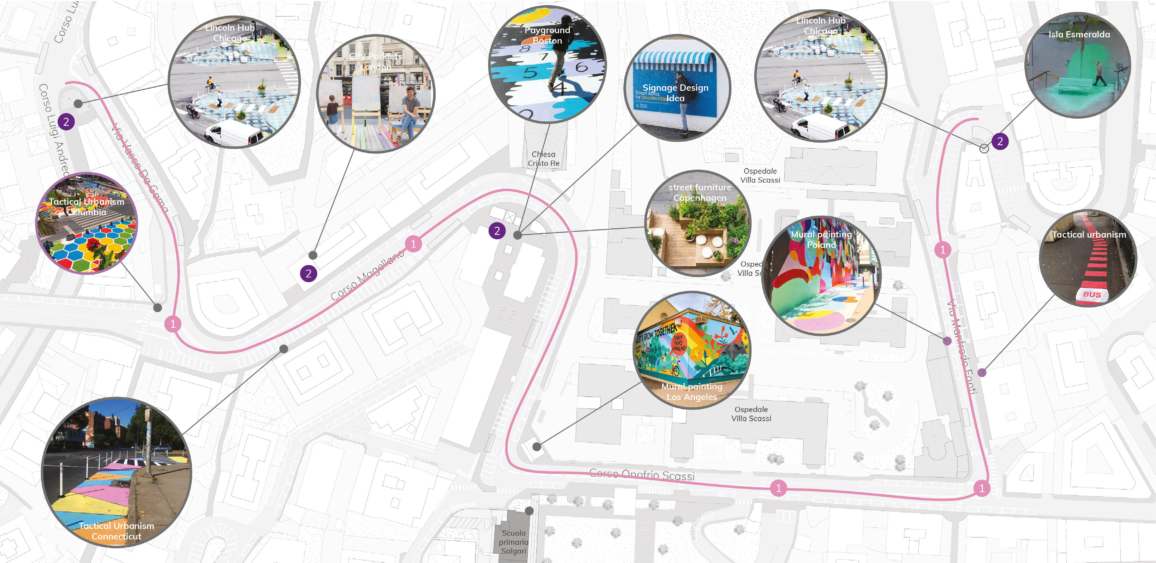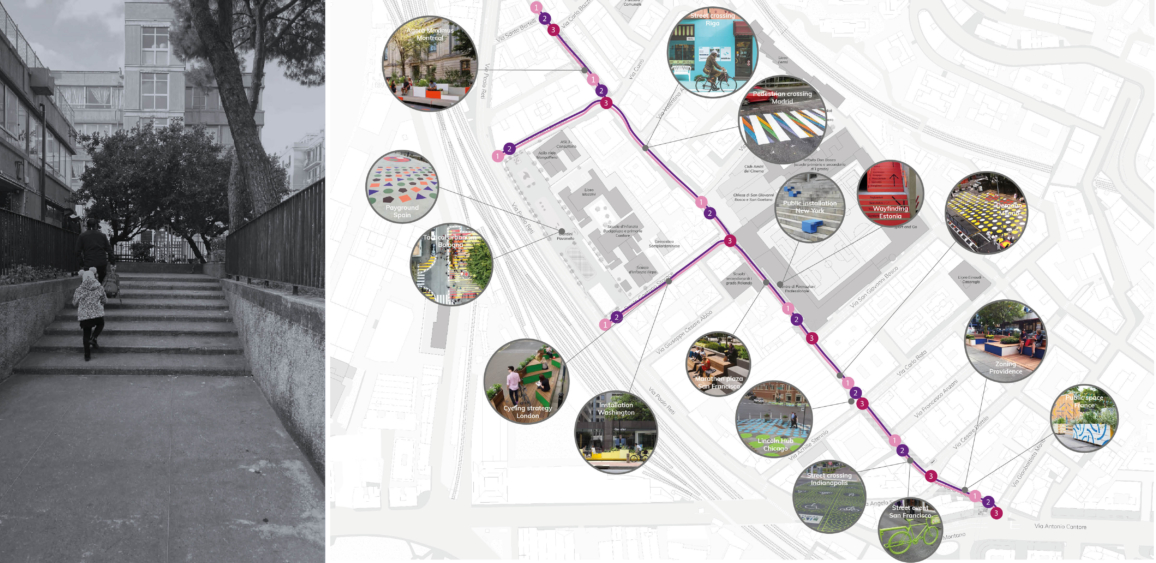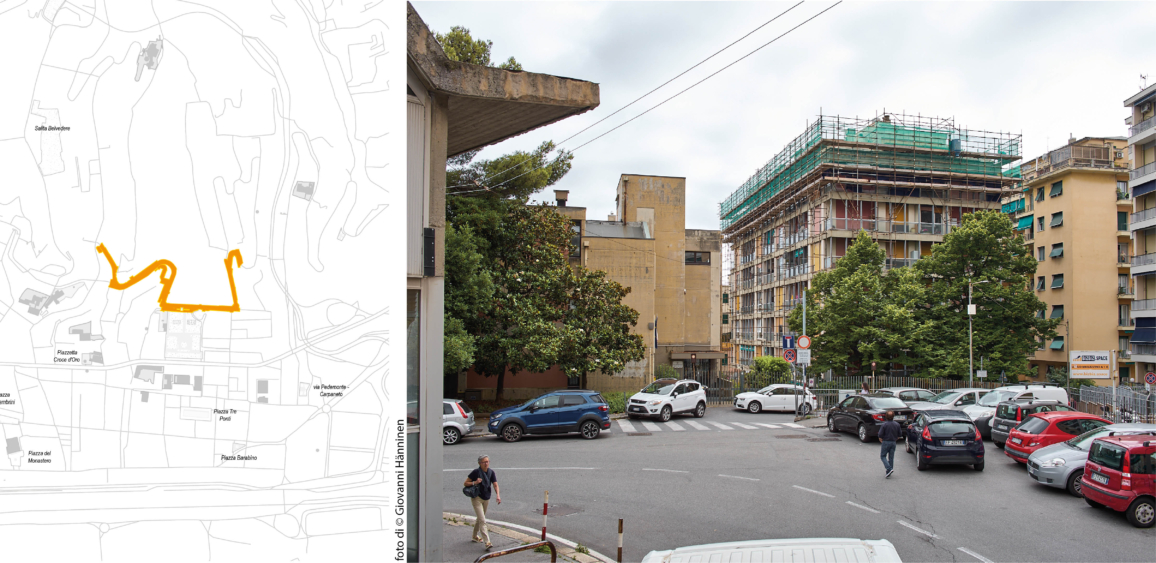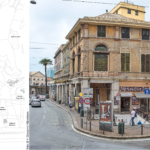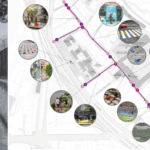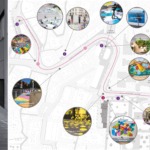Genova Street Lab addresses the theme of urban space regeneration, by activating a process of involvement of local communities for the co-design of light and reversible interventions that can improve the quality of urban spaces and make them more livable, usable, safe and accessible to all.
The Sampierdarena district, an area identified for the first experiments, has had different attitudes over time, from villa buildings of the 16th-17th centuries to the industrial development of the 19th century. Today it houses many public services, including numerous schools and health services such as the Villa Scassi Hospital.
The “tactical” need to make the spaces human-friendly becomes a prerequisite, through dialogue and the contribution of the inhabitants, for strengthening ties with the territory.
The working method, refined by the Municipality of Genoa with the technical and scientific support of DAStU – Politecnico di Milano, provides an initial analysis of the needs of the local community, the conditions of public spaces and the distribution and accessibility to daily services through qualitative techniques including mapping, field surveys, questionnaires, interviews and participatory site visits. The results form the knowledge base for the subsequent activation of the co-design tables.
This process, which involves continuous development, will allow the definition of guidelines and procedures replicable in the rest of the city.
Italiano
